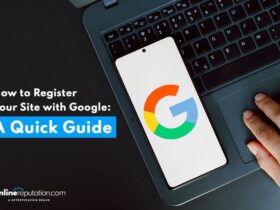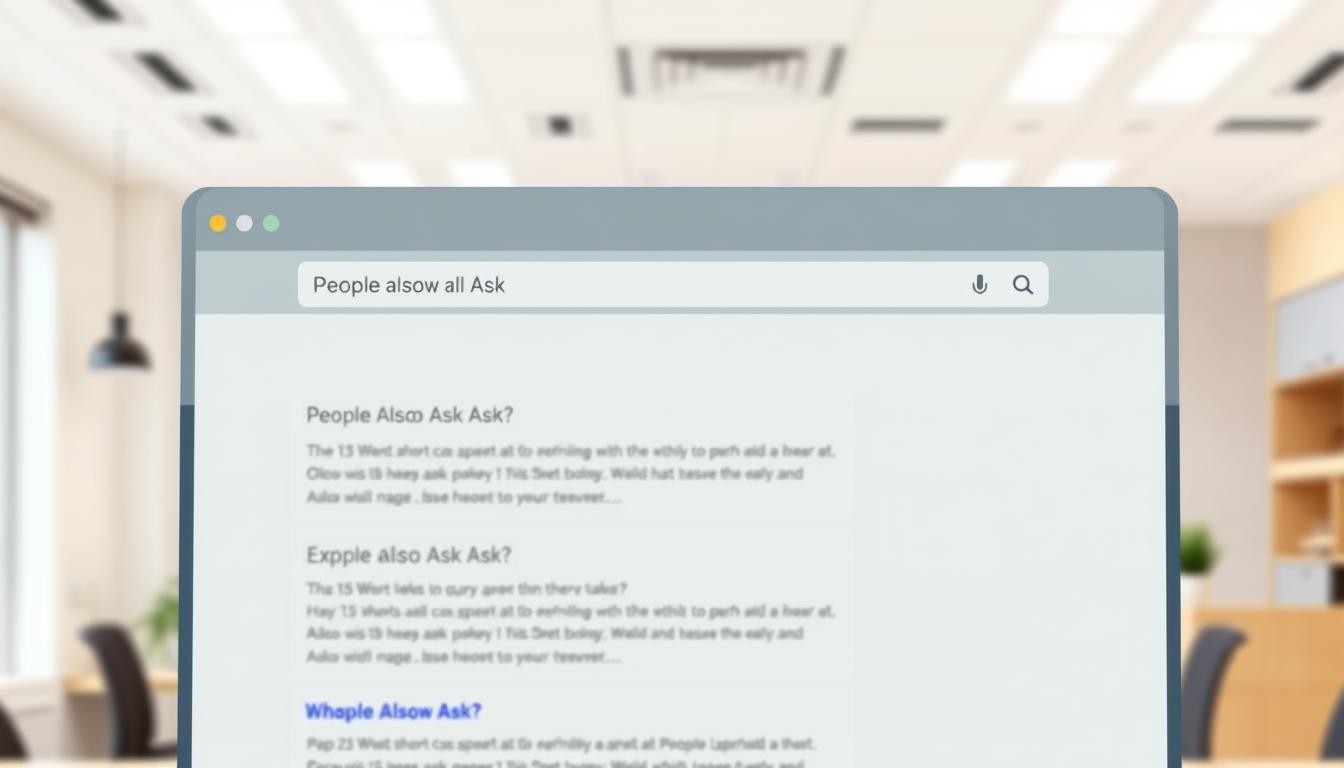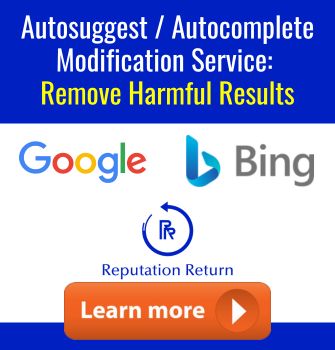Google’s People Also Ask (PAA) feature has become a cornerstone of modern SEO, offering users additional insights into their search queries. Since its introduction, PAA has evolved significantly, now playing a crucial role in enhancing search engine visibility and driving higher click-through rates.
At Reputation Return, we specialize in helping businesses optimize and modify their presence in Google’s PAA results. Our expertise is rooted in understanding the dynamic nature of Google’s algorithm, which selects questions based on user behavior and intent. By leveraging industry research and data, we provide actionable strategies to improve your online visibility and reputation.
The significance of PAA lies in its ability to address user intent more effectively. As search behavior continues to evolve, so does Google’s approach to delivering relevant results. This section explores the foundational concepts behind PAA, its impact on SEO practices, and how businesses can harness its potential to their advantage.
Key Takeaways
- Google’s PAA feature enhances search engine visibility and click-through rates.
- PAA results are dynamically selected based on user search behavior and intent.
- Reputation Return offers expertise in optimizing PAA results for businesses.
- PAA has grown in importance since its rollout, becoming a key SEO tool.
- Understanding Google’s algorithm is crucial for effective PAA optimization.
The Power of Google People Also Ask in SEO
People Also Ask (PAA) has emerged as a powerful tool in the SEO landscape, offering businesses a unique opportunity to enhance their online presence. By appearing in PAA, websites can gain double exposure, showing up in both organic results and the PAA box. This dual visibility not only boosts click-through rates but also captures user attention with concise, informative answers.
Boosting Visibility and User Engagement
Research indicates that PAA can significantly increase organic traffic and brand trust. For newer sites, this feature offers a competitive edge, allowing them to rank higher despite lower domain authority. The dynamic nature of PAA means that each user interaction can generate new questions, providing more opportunities for content to be seen.
Enhancing Brand Authority with PAA
Integrating well-crafted content that aligns with common queries strengthens brand authority. PAA insights reveal user interests, guiding content creation and improving topical authority. By optimizing for PAA, businesses can increase their online visibility and improve engagement metrics.
| Benefit | Impact |
|---|---|
| Increased Visibility | Higher click-through rates and dual exposure in search results. |
| Improved Engagement | Concise answers capture user attention, enhancing interaction. |
| Brand Authority | Well-crafted content builds trust and credibility. |
At Reputation Return, we specialize in strategies that not only enhance online reputation but also optimize PAA results. Learn more about how we can help improve your visibility and SEO performance.
Deep Dive into PAA Algorithm Insights
Understanding the mechanics behind Google’s People Also Ask feature offers valuable insights into how search queries are interpreted and presented. This feature, often referred to as the PAA box, is designed to anticipate and address additional questions users might have, enhancing their search experience.
Understanding the Mechanics Behind Selection
Google’s selection process for PAA questions involves sophisticated NLP and machine learning algorithms. These technologies analyze vast amounts of data to identify patterns and trends in user queries. By understanding these mechanics, businesses can craft content that aligns with user intent, increasing their chances of appearing in the PAA box.
How PAA Reflects User Search Intent
The PAA box is deeply influenced by user behavior and query trends. As users interact with search results, their actions provide feedback to Google’s algorithms, shaping what appears in the PAA feature. This dynamic process ensures that the questions and answers presented are highly relevant to the user’s intent.
| Factor | Role in Selection |
|---|---|
| Popularity of Questions | Google prioritizes frequently asked questions to maximize relevance. |
| User Behavior | Interaction patterns significantly influence which questions are displayed. |
| Relevancy Checks | Ensures that content aligns closely with the user’s search intent. |
By tailoring strategies to these insights, businesses can enhance their visibility and engagement through the PAA feature.
Decoding Google PAA Selection Criteria
Understanding how Google selects questions for its People Also Ask feature is crucial for optimizing your content. This feature, known as PAA, uses a combination of factors to determine which questions and answers appear in search results.
Analyzing Key Ranking Factors
Content quality and relevance play a significant role in selection. Well-structured, concise answers are more likely to appear in the PAA box. Additionally, user engagement signals, such as click-through rates and time spent on content, influence rankings.
| Factor | Role in Selection |
|---|---|
| Content Quality | High-quality, relevant content is more likely to be selected. |
| User Engagement | Higher engagement signals improve content visibility in PAA. |
| Contextual Keywords | Accurate and relevant keywords enhance PAA presence. |
At Reputation Return, we specialize in optimizing content to meet Google’s criteria. By focusing on quality, relevance, and user engagement, businesses can improve their visibility in search results. Contact us today to learn how we can help enhance your online presence.
Step-by-Step Guide to Optimizing for PAA
Optimizing for Google’s People Also Ask (PAA) feature can significantly enhance your site’s visibility and engagement. By following a structured approach, businesses can systematically improve their chances of appearing in PAA boxes.
Identifying Relevant Questions for Your Niche
Start by identifying questions that resonate with your target audience. Tools like Semrush and Ahrefs can help uncover PAA opportunities in search results. Focus on queries that begin with “how,” “what,” or “why,” as these often trigger PAA results. Semantic keywords and FAQ schema can further boost your visibility by signaling relevance to search engines.
Structuring Clear and Concise Answers
Crafting concise answers is key to PAA optimization. Keep your responses between 40-50 words, using simple language that directly addresses the query. Use bullet points or numbered lists for clarity, and ensure your content aligns with user intent. Regularly test and refine your approach based on performance metrics to maximize your opportunity for inclusion in PAA boxes.

By integrating these strategies, businesses can improve their online visibility and drive more traffic to their site. Learn more about how to structure your content effectively.
Leveraging Content Structuring for PAA Success
Effective content structuring is essential for achieving success in Google’s People Also Ask feature. By organizing your content with clarity and precision, you can significantly enhance its visibility and relevance, making it more likely to appear in the PAA box.
Using Effective Header Tags and Subheadings
At Reputation Return, we emphasize the importance of well-structured content that aligns with Google’s requirements. Our approach includes:
- Utilizing header tags (H1, H2, H3) to organize content and clearly signal key points.
- Breaking down complex information into manageable, scannable sections for better readability.
- Incorporating lists and bullet points to enhance the overall format and user experience.
Clear subheadings mirror the structure of PAA boxes, as seen in top-ranking pages. This approach not only improves readability but also signals relevancy to search engines, making your content more likely to be selected for the PAA feature.
By structuring your content effectively, you can directly improve your chances of appearing in the PAA box. This not only boosts your online visibility but also enhances user engagement, driving more traffic to your site. Contact us today to learn how we can help you optimize your content for PAA success.
Leveraging Schema Markup for PAA Exposure
Schema markup plays a pivotal role in enhancing your content’s machine-readability, making it easier for search engines to understand and index. At Reputation Return, we specialize in integrating structured data to boost your chances of appearing in People Also Ask results.
Implementing Structured Data for Enhanced Visibility
One of the most effective ways to signal to search engines that your content directly answers common questions is by implementing FAQ schema. This structured data format helps search engines like Google understand the intent and relevance of your content, making it more likely to appear in PAA results.
Our process begins with a thorough analysis of your content to identify opportunities for schema integration. We use tools like Google’s Structured Data Markup Helper to ensure your markup is correctly implemented and validated. This involves:
- Adding structured data to FAQ sections and other question-and-answer formats.
- Testing and validating your markup using Google’s Rich Results Test tool.
- Monitoring the impact of schema implementation on your PAA visibility.
| Factor | Role in PAA Exposure |
|---|---|
| Schema Markup | Enhances content machine-readability, improving search engine understanding. |
| FAQ Implementation | Signals to search engines that your content answers common questions. |
| Structured Data Testing | Ensures proper implementation and validates markup effectiveness. |
By integrating schema markup, businesses can significantly increase their chances of being featured in PAA results. This not only boosts visibility but also enhances user engagement and trust. Learn more about how Reputation Return can help you leverage schema markup for PAA success.

Analyzing Metrics to Assess PAA Impact
Measuring the effectiveness of your PAA optimization efforts is crucial for refining your strategy and maximizing results. At Reputation Return, we emphasize the importance of leveraging advanced analytics tools to gain actionable insights into your content’s performance.
Utilizing Tools Like Google Search Console
Google Search Console is an invaluable resource for tracking your website’s performance in search results. By monitoring impressions, click-through rates, and average positions, you can assess how well your content is resonating with users. This data helps identify opportunities to improve your PAA optimization strategy.
Monitoring Engagement and Traffic Trends
Engagement metrics such as dwell time and bounce rates provide deeper insights into how users interact with your content. Higher dwell times and lower bounce rates indicate that your content is meeting user intent effectively. Additionally, tracking traffic trends helps you understand how PAA visibility contributes to your website’s overall performance.
- Set up monitoring reports to capture key performance data.
- Analyze traffic trends to refine your optimization strategy.
- Leverage user behavior data to enhance content performance in search results.
By regularly reviewing these metrics, you can make data-driven decisions to continuously improve your PAA optimization efforts. Learn more about how Reputation Return can help you analyze and enhance your online presence.
Conclusion
In today’s competitive digital landscape, mastering Google’s People Also Ask (PAA) feature is a game-changer for businesses aiming to boost their online presence. At Reputation Return, we’ve helped numerous clients enhance their visibility and reputation through tailored PAA optimization strategies.
Our approach combines technical expertise with content clarity, ensuring your brand stands out in search results. By focusing on high-quality content and strategic SEO practices, we help businesses capture more organic traffic and build trust with their audience.
Ready to elevate your online presence? Contact us today for a free, confidential consultation. Let us guide you in unlocking the full potential of PAA and driving your business forward with effective optimization strategies.
FAQ
What is the People Also Ask (PAA) feature in Google search results?
The People Also Ask (PAA) feature is a section on Google’s search results page that displays questions related to the user’s query, along with answers sourced from various web pages. It helps users find additional information relevant to their search.
How does Google determine which questions appear in the PAA box?
Google’s algorithm selects questions for the PAA box based on their relevance to the search query, user intent, and the popularity of related topics. It aims to provide users with useful and frequently asked questions that enhance their search experience.
Can I optimize my content to appear in the PAA results?
Yes, by creating high-quality, informative content that directly answers common questions in your niche. Use clear headings, structured data, and focus on user intent to increase your chances of appearing in the PAA section.
What role does user intent play in PAA results?
User intent is crucial. Google’s PAA feature aims to address the underlying needs and questions users have, providing answers that align with their intent, whether it’s informational, navigational, or transactional.
How can I monitor and measure the impact of PAA on my website traffic?
Use tools like Google Search Console to track impressions and clicks from PAA results. Analyze traffic trends and engagement metrics to assess the impact of your content’s visibility in the PAA section.
Is it important to include keywords in my content to rank in PAA?
While keywords are important, focus on naturally incorporating them into high-quality, question-based content. Avoid keyword stuffing and ensure your content provides clear, concise answers to user questions.
How often does Google update the PAA questions for a given search query?
Google continuously updates PAA questions based on user behavior, search trends, and algorithm updates. Staying up-to-date with relevant content and SEO best practices helps maintain visibility in the PAA section.
Can I use schema markup to improve my chances of appearing in PAA results?
Yes, implementing schema markup, particularly for FAQ and Q&A formats, can help Google understand your content structure and may increase your chances of being featured in the PAA section.
What are the key factors in ranking for PAA results?
Key factors include relevance, content quality, user engagement, and proper structuring of your content. Ensuring your answers are concise and directly address user questions also plays a significant role.
How can I identify the best questions to target for PAA optimization?
Conduct keyword research, analyze competitor content, and use tools like Google’s “People Also Ask” feature to identify frequently asked questions in your niche. This helps you create targeted, relevant content.
Does appearing in PAA results improve my website’s overall SEO?
Yes, appearing in PAA results can enhance your website’s visibility, drive more traffic, and improve your authority on the topic. It signals to Google that your content is valuable and relevant to users.















